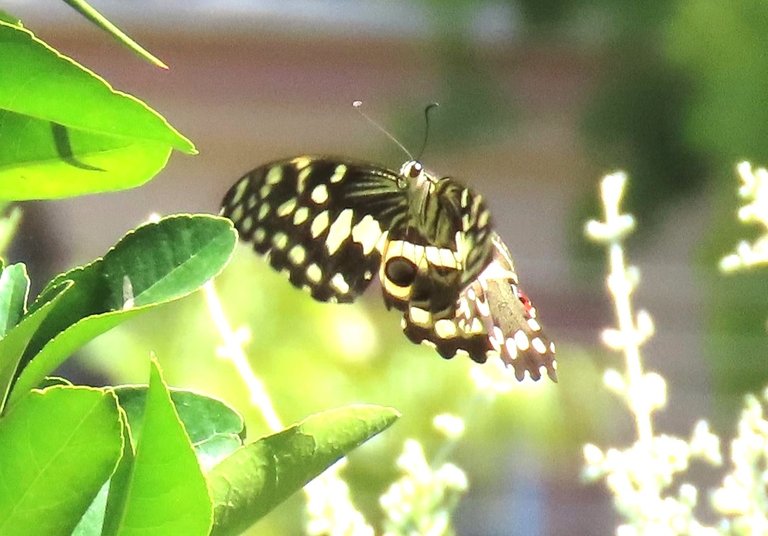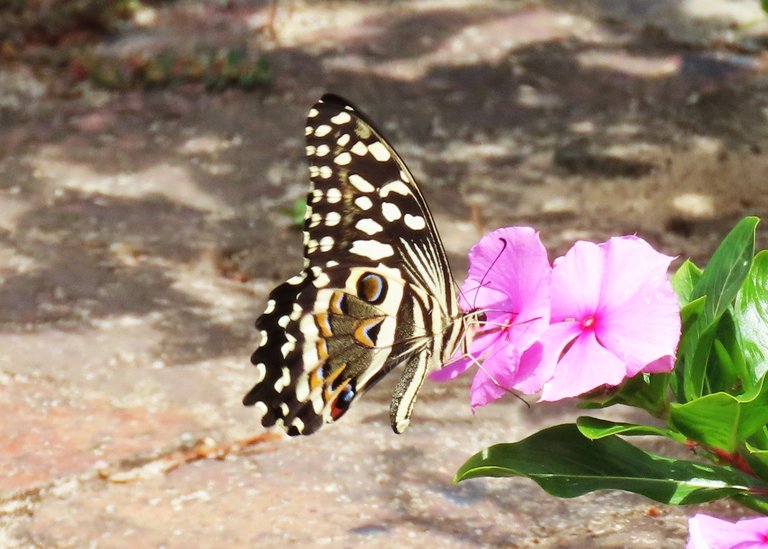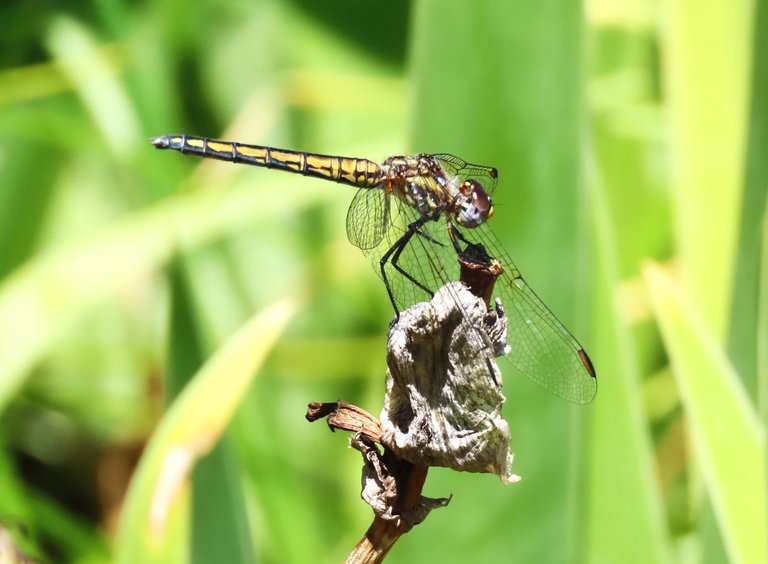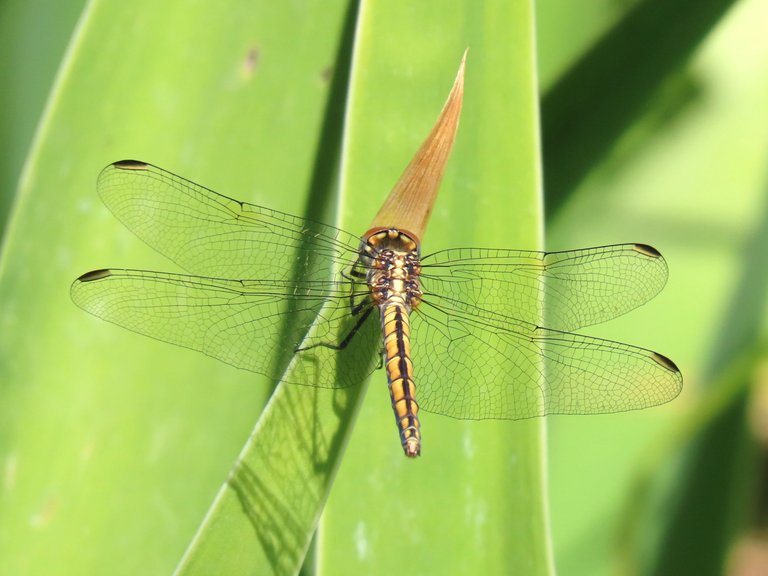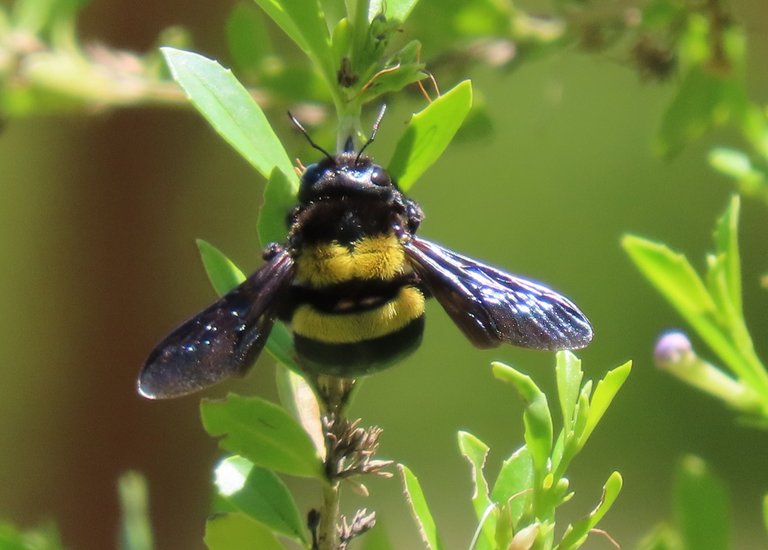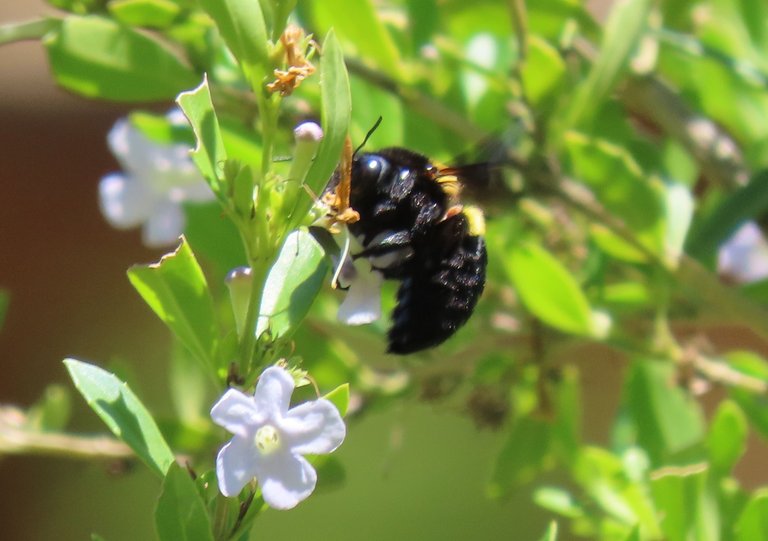Oh, and a female Carpenter bee, as I love to show the beauty of smaller critters in nature.

Not any bird, as this is a rare shot of a Paradise Fly-catcher in flight. Just look at those colors, and the long tail of this male.
I have divided the post into 4 segments and will identify the appearance in each segment.
Segment 1. A Paradise Flycatcher.
I am always thrilled when I get this bird, as they only appear for a short period during the mating season.
The paradise flycatchers (Terpsiphone) are a genus of birds in the family Monarchidae. The genus ranges across Africa and Asia, as well as a number of islands. A few species are migratory, but the majority are resident. The most telling characteristic of the genus is the long tail streamers of the males of many species. In addition to the long tails the males and females are sexually dimorphic and have rufous, black and white plumage.
Segment 2.
Here we have a Citrus Swallowtail butterfly in flight, and in the second photo, sitting on a periwinkle flower.
Papilio demodocus, the citrus swallowtail or Christmas butterfly, is a swallowtail butterfly which commonly occurs over the entirety of sub-Saharan Africa, including Madagascar, besides the southern Arabian Peninsula. The caterpillars feed on various native plants of especially the family Rutaceae, but have also taken to the leaves of cultivated citrus trees.
Segment 3. A&B
A. is a Navy Dropwing female (Trithemis furva)
They can be seen in these African countries, including South Africa.
Angola, Cameroon, Chad, Ivory Coast, Equatorial Guinea, Ethiopia, Guinea, Kenya, Liberia, Madagascar, Malawi, Mozambique, Namibia, Nigeria, Sierra Leone, Somalia, South Africa, Sudan, Tanzania, Uganda, Zambia, Zimbabwe
B. Might be an Elusive Skimmer female (Orthetrum rubens)
I couldn't get a side view to make sure what it was.
Orthetrum rubens, or the Elusive Skimmer, is a species of dragonfly in the family Libellulidae. It is endemic to South Africa. Its natural habitat is rivers. It is threatened by habitat loss.
Segment 4.
And finally we have a female Carpenter bee (Xylocopa caffra).
Xylocopa caffra is a species of Afrotropical carpenter bee that ranges from west to central and southern Africa, besides Madagascar and some Indian Ocean archipelagos.
The females are black with two white or yellow bands over the hind thorax and first abdominal segment respectively, while the males are uniform greenish yellow in colour. Females with white bands are associated with dry climatic conditions during larval development, but females of either colour, or colour grade, may emerge from the same brood. In the Western Cape all have yellow bands however. A form with orange-red bands occurs in East Africa.
The post seems to be a bit scientific, but I had fun putting it together, as it reminded me of university days. The old rule was that one could not put anything into writing, without sourcing and citing it, and nowadays I wonder if that rule still stands. In any case, I digress, and as you can see, I tried something different here.
Such is life.
I hope that you liked the pictures and the story.
Photos by Zac Smith-All-Rights-Reserved.
Camera: Canon PowershotSX70HS Bridge camera.
Thank you kindly for supporting this post.
